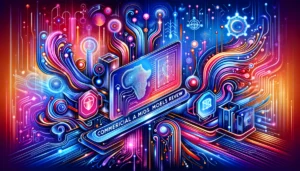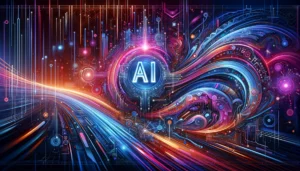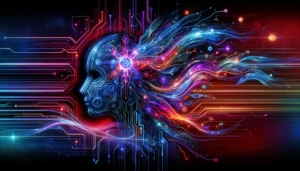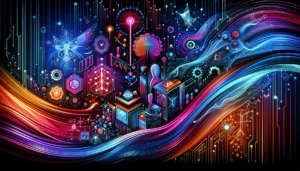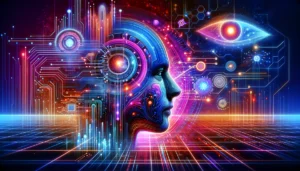Integrating AI with Emerging Technologies
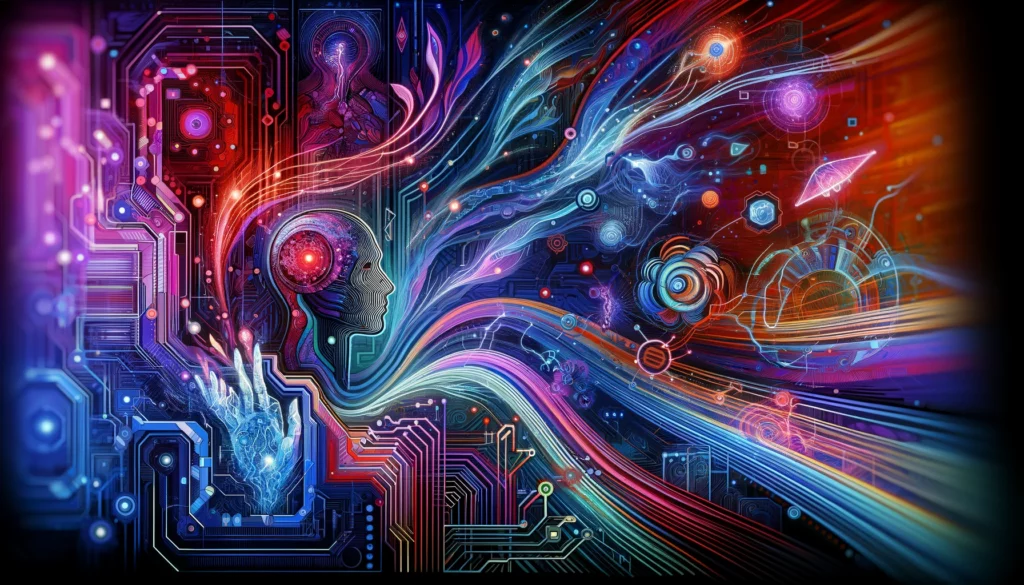
The integration of Artificial Intelligence with emerging technologies has sparked a paradigm shift across various industries, unlocking new possibilities and redefining how we interact with innovation. This fusion has propelled advancements in numerous sectors, reforming healthcare, finance, transportation, and beyond.
The future is here and it’s full of exciting things. Automation is already really normalized with artificial intelligence and the Internet of Things working together today, we have smart watches, cars that are smarter than ever before. Voice assistant. Smart cars. The perfect illustration of how much progress has been made already can simply be seen by looking around. We Arte, like the Apple Watch, gives us more information about ourselves than ever before. Voice recognition software means we don’t have to say Hey Siri all the time and it gets even better. AI and IoT have already started working together in ways never thought possible.
AI can be thought of as a computer program designed so it has its own thoughts just like humans and can learn from their experiences. For example, The robot Pet Dog. This pet dog is so smart that it can develop a new personality over time, recognize faces, and communicates with a owner using musical terms. IoT, is a network that connects various physical devices together using the Internet.
These devices communicate with each other wirelessly without requiring human intervention and they can do so thanks to sensors and actuators embedded within them.
The Internet of Things – digital nervous system that automatically senses in response to changes in your environment. So when artificial intelligence is combined with the Internet up things, it means that those devices can analyze data and make decisions and act on those dantas without any human involvement.
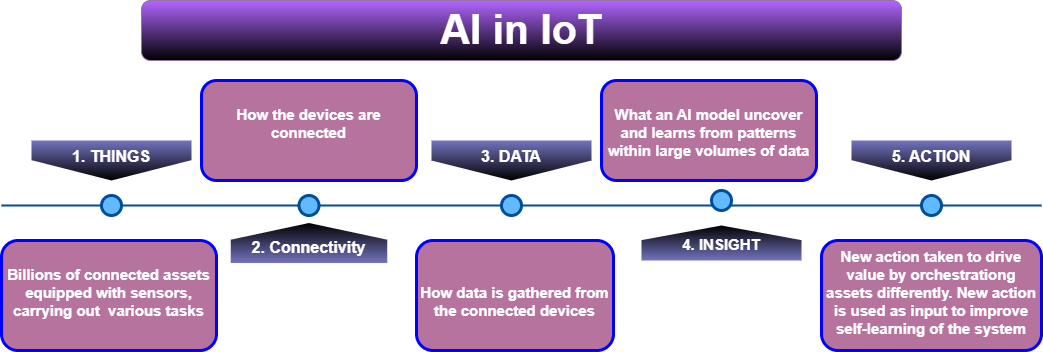
AI combined with the Internet of Things (IoT) has significantly transformed the way we perceive interconnectedness. The integration of AI with the IoT has sparked a powerful synergy, offering multifaceted advantages across diverse industries. Together, they form a symbiotic relationship, leveraging each other’s strengths to transform the way data is collected, analyzed, and utilized.
At the heart of this synergy lies data. IoT devices generate an immense volume of data from various sources like sensors, wearables, and smart appliances. AI algorithms thrive on this data, using its richness to derive meaningful insights and make informed decisions.
Imagine a “Smart Home“ equipped with sensors that monitor temperature, lighting, and security. These sensors collect data, which AI processes to adjust settings, optimizing energy consumption and ensuring security, all without human intervention. Consider the scenario of a “Smart City“. Traffic lights, cameras, and sensors gather data on traffic flow. AI algorithms then process this data, identifying patterns and optimizing traffic routes in real-time. This optimization reduces congestion, enhancing overall traffic management.
In the sphere of manufacturing, IoT sensors on machinery collect real-time performance data. AI steps in to analyze this data, predicting potential equipment failures. This predictive maintenance approach prevents unexpected breakdowns, reducing downtime and operational disruptions.
The fusion of AI and IoT doesn’t stop there. In our homes, IoT devices like smart assistants gather data on our preferences and habits. AI algorithms utilize this information to provide personalized recommendations or control connected devices according to our needs.
Healthcare benefits from this collaboration as well. Wearable IoT devices track health metrics, generating continuous data streams. AI processes this data, offering personalized health insights and early warnings about potential health issues, revolutionizing personalized care.
The agricultural sector leverages IoT sensors to monitor soil conditions and crop health. AI analyzes this data to optimize irrigation schedules, predict crop yields, and ensure optimal conditions for growth.
Security is another domain where AI and IoT combine forces. Surveillance cameras and IoT-based security systems gather data on activities. AI algorithms scrutinize this data, swiftly identifying potential threats and ensuring timely responses to safeguard assets.
The energy sector, with the aid of IoT-enabled smart grids, collects vast data on energy usage patterns. AI algorithms leverage this data to predict demand, optimize distribution, and promote efficient energy consumption.
This integration fosters smarter decision-making, predictive capabilities, personalized experiences, resource efficiency, and advancements across industries. It signifies a pivotal shift towards enhanced operational efficiency, improved quality of life, and a smarter, interconnected world.
The integration of AI with the IoT significantly increases cybersecurity. By combining AI’s analytical capabilities with data generated by IoT devices, security measures are enhanced through real-time threat detection and proactive actions to prevent potential breaches. AI’s predictive abilities enable preemptive security measures based on historical IoT data, while its capacity for behavioral analysis detects anomalies or irregularities in device behavior, signaling potential threats. This integration allows for automated security responses, swiftly isolating compromised devices or blocking suspicious network activities. AI-driven authentication processes improve identity verification using multiple IoT data points, enhancing access controls. In the event of a cyber attack, AI’s quick data analysis from interconnected IoT devices aids in incident response and recovery efforts, minimizing damage and accelerating recovery.
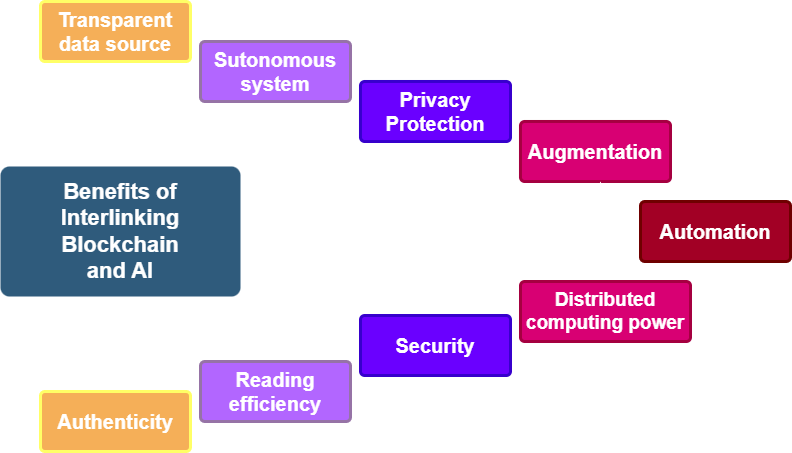
Blockchain technology, renowned for its security and transparency in transactions, is now collaborating with AI. By integrating AI algorithms into blockchain systems, enhanced data security and efficient decision-making capabilities are achieved. This convergence ensures faster and more accurate data analysis while maintaining the security and integrity of the information stored.
AI and blockchain, when integrated, offer significant potential in enhancing cybersecurity measures. Consider AI as the analytical powerhouse that scrutinizes patterns, identifies anomalies, and forecasts potential threats within vast sets of data. Blockchain, on the other hand, provides an immutable and decentralized ledger system, ensuring data integrity and security through its distributed structure.
Combining AI’s capabilities with blockchain’s security features creates a strong defense against cyber threats. AI can analyze intricate patterns in transactions and detect irregularities that might indicate a breach or unauthorized access. Concurrently, blockchain’s decentralized architecture helps in securing data by preventing unauthorized modifications or hacks.
An example of their synergy would be using AI algorithms to monitor blockchain transactions for unusual behavior. If the AI detects suspicious activity, it can immediately signal the blockchain network to halt the transactions, thereby preventing potential threats before they escalate. Furthermore, blockchain’s encryption and consensus mechanisms can reinforce the AI system, ensuring the integrity of the AI-generated insights and preventing data tampering.
This integration also enhances data privacy by enabling secure, encrypted storage of sensitive information. Blockchain’s decentralized structure makes it challenging for hackers to breach since data isn’t stored in a central location. AI can complement this by constantly monitoring the blockchain network for any vulnerabilities or attempts at unauthorized access.
The collaboration between AI and blockchain offers a strong cybersecurity framework. AI’s analytical prowess and blockchain’s security features together create a formidable defense, providing real-time threat detection, data integrity, privacy, and decentralized security mechanisms against evolving cyber threats.
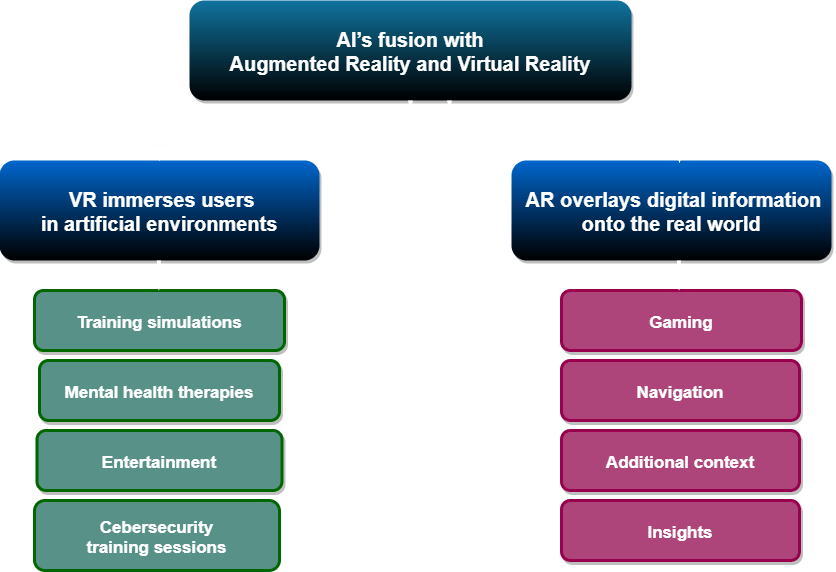
AI’s fusion with Augmented Reality and Virtual Reality is reshaping experiences.
VR creates entirely immersive, simulated environments. Combining these, especially in cybersecurity, can be a game-changer. Picture this: in a cybersecurity scenario, AR could display real-time threat alerts or warnings directly onto a security analyst’s physical environment. They might see potential vulnerabilities highlighted in their workspace, providing immediate visual cues for action. It’s like having a personalized, visual dashboard that augments their understanding of the cyber landscape. VR could simulate real-world cyber attack scenarios in a controlled environment. It could be used for immersive training sessions, allowing cybersecurity professionals to virtually experience and practice responding to cyber threats. This hands-on approach within a virtual setting can greatly enhance their readiness to tackle real attacks effectively.
Take an example: Suppose a cybersecurity team is using AR glasses during an emergency response. These glasses could display critical information about ongoing cyber threats in their field of vision, enabling faster decision-making and response. Similarly, VR could immerse cybersecurity professionals in a simulated cyber attack, allowing them to learn and develop countermeasures in a risk-free environment. This practice can significantly improve their skills and preparedness to handle actual cyber threats.
The synergy between AR and VR in cybersecurity revolves around enhancing situational awareness, training, and response capabilities. AR aids in real-time information overlay, while VR offers immersive training scenarios, together elevating the readiness and efficiency of cybersecurity professionals to combat evolving cyber threats.
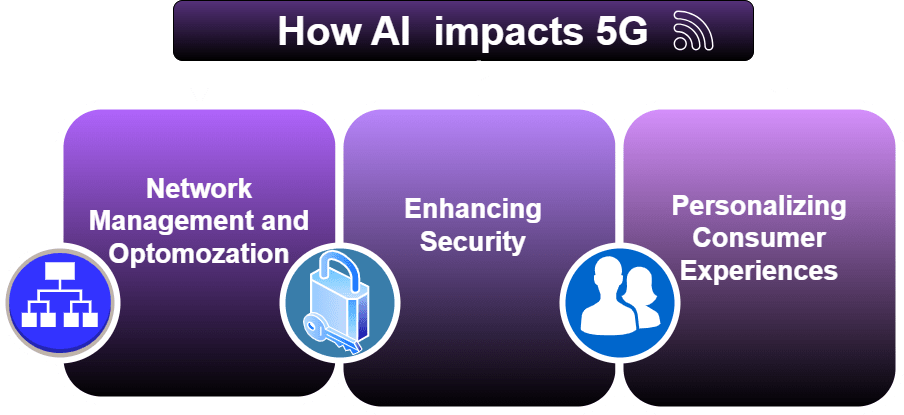
Another emerging partnership is AI’s collaboration with 5G technology. The superfast and low-latency connectivity of 5G networks combined with AI’s computational power revolutionizes industries like autonomous vehicles, telemedicine, and real-time data analysis. For instance, in the healthcare sector, AI-powered robots can perform surgeries remotely with real-time feedback facilitated by 5G connectivity.
Think of AI as the brain behind smart systems, capable of analyzing vast amounts of data to detect anomalies or potential threats. When combined with the ultra-fast, low-latency connectivity of 5G, it’s like giving this brain a superhighway to process and respond to cyber threats in real-time.
For instance, with the speed and low latency of 5G, AI-powered cybersecurity systems can rapidly communicate and share threat intelligence across devices and networks. This swift communication helps in deploying immediate responses to cyber threats, preventing potential attacks or mitigating their impact faster than before.
Consider an example: Suppose there’s an AI-driven security system in a smart city that uses 5G connectivity. If a cyber threat is detected in one area, this system, powered by AI, can quickly analyze the threat, gather data from various sensors or devices across the city connected via 5G, and take proactive measures to contain or neutralize the threat in real-time.
Moreover, AI’s ability to learn and adapt combined with 5G’s high-speed connectivity enables AI-driven cybersecurity systems to continuously evolve. This adaptability allows them to learn from new threats or patterns in real-time and update their defense mechanisms more rapidly and effectively.
The integration of AI with 5G technology significantly strengthens cybersecurity by enabling faster threat detection, real-time response, and continuous learning to keep pace with evolving cyber threats. This amalgamation forms a robust defense mechanism crucial for safeguarding critical systems and networks in today’s hyper-connected world.
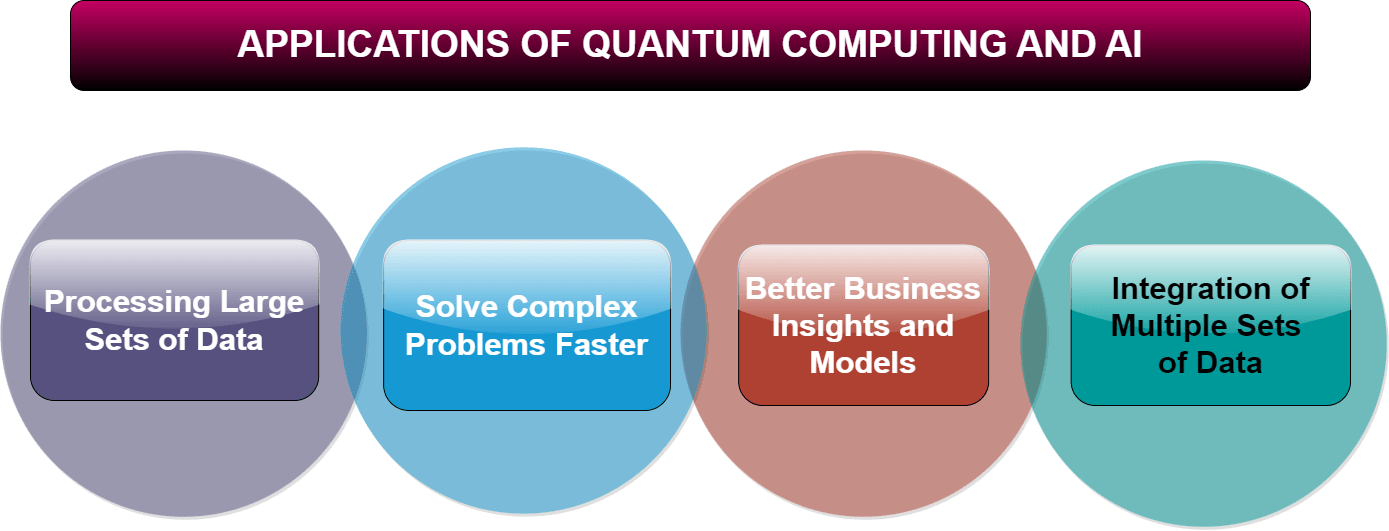
AI teamed up with Quantum Computing promises groundbreaking advancements. Quantum computing’s ability to process vast amounts of data at speeds unimaginable with classical computers, when integrated with AI algorithms, unlocks potential in complex problem-solving, drug discovery, weather forecasting, and encryption. The synergy between Artificial Intelligence and Quantum Computing holds immense potential for revolutionizing cybersecurity.
AI, known for its ability to analyze vast amounts of data and detect patterns, when paired with the computational power of quantum computing, takes this capability to a whole new level. Imagine having a supercharged AI that can process and analyze data exponentially faster than any conventional computer.
Quantum computing’s remarkable processing power allows AI to swiftly crunch through complex algorithms and solve problems that are practically impossible for classical computers. This means AI can tackle sophisticated encryption techniques, helping identify potential vulnerabilities in cryptographic systems more effectively.
For instance, consider traditional encryption methods like RSA, which are secure due to their complexity. However, a quantum computer’s immense computational power could crack these codes within minutes, rendering conventional encryption obsolete. Here’s where AI’s predictive capabilities come into play – it can forecast these vulnerabilities and help develop quantum-resistant encryption methods before they become a threat.
Moreover, AI’s role in quantum cybersecurity extends to threat detection. Quantum computers can process and analyze huge datasets, often in near-real-time, aiding AI systems in identifying patterns indicative of cyber threats more rapidly and accurately.
The amalgamation of AI and Quantum Computing in cybersecurity creates a powerhouse duo that excels in detecting threats, predicting vulnerabilities in encryption methods, and developing robust defense strategies. This fusion will likely play a pivotal role in fortifying cybersecurity measures, safeguarding critical systems and data in our increasingly digitized world.
However, while these partnerships between AI and emerging technologies exhibit immense promise, they also raise ethical considerations and challenges. Privacy concerns, biases in AI algorithms, and the need for robust regulatory frameworks are critical aspects that demand attention to ensure responsible and ethical deployment.
The integration of AI with emerging technologies is a catalyst for transformative change across industries, heralding a future where innovation is boundless, it is a gateway to a transformative future. It’s akin to stitching together pieces of a puzzle, promising breakthroughs across diverse domains, fundamentally changing the way we live, work, and interact with technology. However, careful consideration of ethical implications and proactive measures to address challenges are imperative to harness this fusion’s full potential for the benefit of society.





